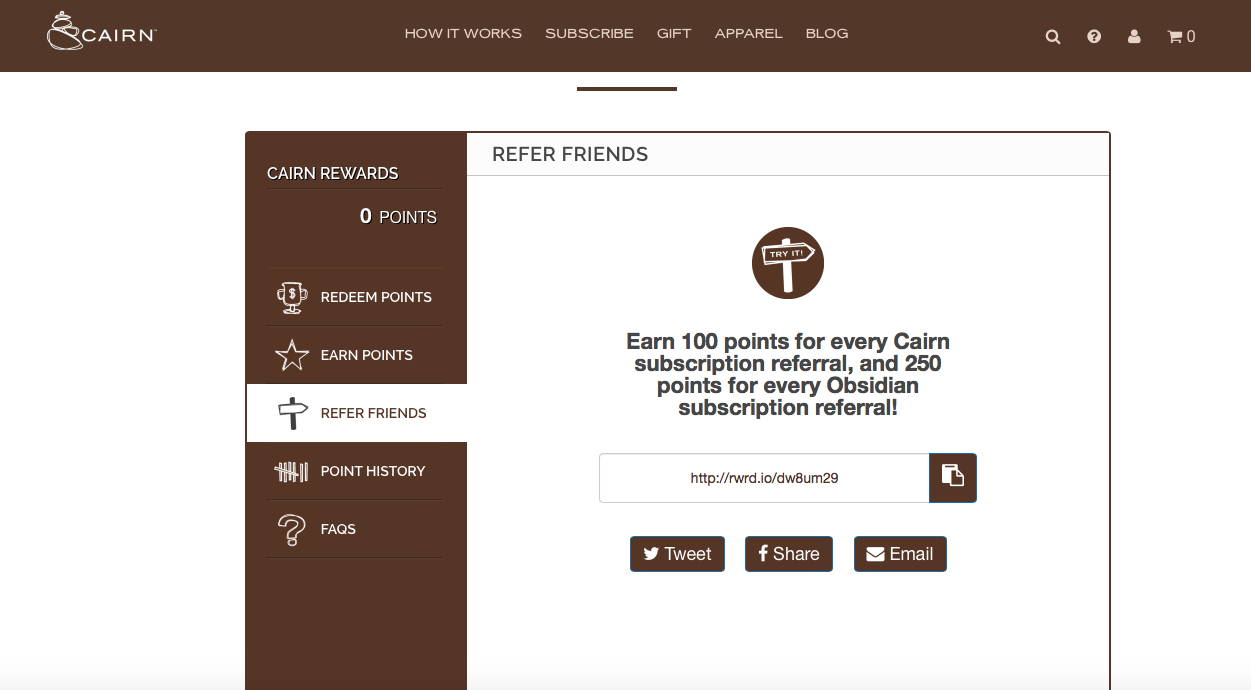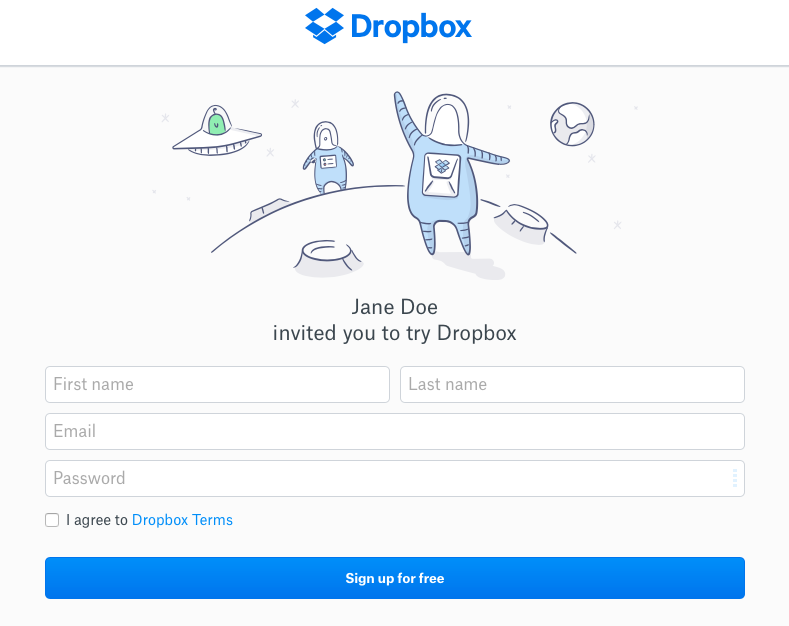This post is the second half of a two-part series on the social psychology of referral programs. You can read the first post here.
Referrals from friends and family have become critical to consumer decision-making. In fact, a 2010 article by McKinsey stated that word of mouth “is the primary factor behind 20 to 50 percent of all purchasing decisions” -- and that’s without the additional economic incentives of a structured referral program. Even further, a 2011 study estimated that customers obtained through one bank’s referral program were more loyal, and ultimately 16%-25% more valuable, than non-referred customers. It’s therefore not a surprise that referral programs can be immensely powerful tools for companies who are looking to acquire new and valuable customers as part of their growth strategy. But why might this be, and what does it mean for your referral program?
In our last post, we examined the social phenomena that motivate customers to refer their friends. Specifically, we looked at how the act of sharing about information and opportunities (in this case, referring others to a good brand) can actually increase a person’s social capital in a variety of ways. It can do so by: 1) increasing the prosperity of an individual’s network, 2) signaling the individual’s positive qualities to others, and 3) directly strengthening the individual’s relationships. Therefore, customers have rather strong incentives, above and beyond the financial reward, to recommend a high-quality and well-perceived brand to their friends.
In this post, we’ll turn our attention to the flip side of a referral. What influences an invitee’s decision to trust their friend’s recommendation and make an initial purchase? And, after making this first purchase, what influences them to keep coming back with such loyalty? After all, an initial discount alone doesn’t explain referred customers’ increased long-term loyalty.
As it turns out, there are a number of social phenomena that can explain the success of this portion of the referral process and why it can generate so much value for your brand. Let’s explore each in turn.
The question of trust; friends are credible sources
Trust is a key component of both social relationships and consumer decision-making, so it’s not surprising that a 2012 Nielsen survey found that consumers believe their friends are more credible than traditional marketing. In fact, 92% trusted word-of-mouth recommendations more than they trusted any other type of advertising. This is not surprising, and may occur for a variety of reasons. One possibility is that friends have presumably built up a certain level of trust in their relationship -- a level of trust which an invitee will not yet have in the recommended brand. Therefore, the invitee is more likely to trust their friend’s opinion than the brand’s. Further, a person’s friends will tend to be much more familiar with his or her tastes and lifestyle, and so able to very credibly suggest products. And finally, a brand’s endorsement of its own product is to be expected and is therefore less meaningful, while a friend’s endorsement of a product is not. For reasons like these, potential customers are much more likely to buy into a product if it comes recommended by a friend rather than by the brand itself.
Birds of a feather; referrals are self-targeted marketing
Another commonly-observed phenomenon is the tendency for people to gravitate towards, and form relationships with, those who are similar to them. This is outlined by Similarity/Attraction Theory, which describes how people tend to befriend those whom they feel they are similar to. For example, if two people discover that they’re both Duke Basketball fans, they’re more likely to perceive each other positively than if they hadn’t made the discovery at all. Because of the increased probability of friendships forming between like-minded individuals, your customers are likely to be both demographically and aspirationally similar to the friends that they refer. And, given that your customers appreciate your brand and products enough be referring others, their friends are much more likely to also become loyal customers -- simply due to their similar demographic profiles and personal tastes! From this perspective, referrals essentially serve as a form of self-targeted marketing.
Wisdom of the crowd; social proof reassures potential customers
Another concept, and one that is commonly mentioned in the context of referrals, is that of social proof. Aileen Lee describes social proof as “the positive influence created when someone finds out that others are doing something.” This phenomenon largely occurs because people often assume that those around them have access to relevant information that they themselves do not. From this perspective, a referral provides evidence that another consumer has had positive experiences with the brand in question. This knowledge in turn motivates the invitee to themselves engage with the brand, as they now have the comfort of knowing that they will not be this brand’s first happy customer.
What does balance have to do with it?; balance can motivate opinions
Dictionary.com defines balance as “a state of equilibrium or equipoise”. That is, the word describes a system that is stable and in harmony.
Balance Theory describes the patterns in opinion that people strive to maintain in order to ensure this balance and consistency. This theory posits that, if person A likes person B, and person B likes object O, then person A is motivated to also like object O. Doing so maintains a sort of “cognitive harmony” in Person A’s opinion of both his friend and the object, and this releases mental tension. One particular implication for referral programs is as follows: if James (invitee) likes Alan (referrer), and Alan likes your brand, then -- in an effort to maintain balance -- James is motivated to also like your brand. From this perspective, a referral program is important simply because it is what informs James that Alan does indeed support your products.
What does this all mean for me?
At this point, we’re faced with the question of how best to apply this knowledge to your brand’s own referral program. As it turns out, you can demonstrate an understanding of these social phenomena simply by tweaking the messaging that invitees receive after being referred. For example, if you elect to send referrals via email, it is important to communicate in the email that the referral was made because the referrer believes in the brand enough to share it. Starbucks is a great example of how to accomplish this. They give customers the option of writing personalized messages when making a referral, and that message is sent from the referrer’s own email address. This serves to emphasize that a friend (not the brand) is recommending the product, making the referral more influential and credible on a personal level.

Image via Starbucks
Giving customers unique referral links is an alternative to having them send this sort of email, and it actually offers the referrer more flexibility. Because this design requires customers to draft their own message and send the link personally, it has many of the same benefits as a personalized email. Cairn has adopted this approach very successfully, and provides each customer with an individual referral URL.

Image via Cairn
Small tweaks to the landing page that potential customers are directed to can also make a big difference. For example, consider including messaging that emphasizes the peer-recommended element of the referral (rather than only emphasizing the financial incentive to purchase, as many companies choose to do). Dropbox’s referral landing page, for instance, states that “[Name] invited you to try Dropbox”, and does not re-mention the additional 500 MB that invitees receive after sign-up.

Image via Dropbox
The Takeaway

At the end of the day, the key is this: thanks to their inherently social design, referral programs are effective above and beyond the financial incentives that they offer customers. This fact helps to explain their impressive effectiveness, and it has implications for where to place emphasis when it comes to your own program.



